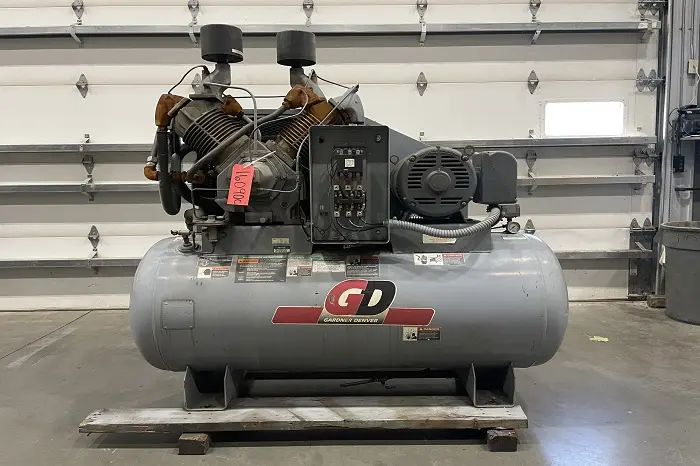Understanding the components of your air compressor is crucial for maintenance and troubleshooting. One vital part is the check valve, which plays a significant role in ensuring efficient operation. This article will explore where to locate the check valve on an air compressor, its function, and how to maintain it for optimal performance.
Air compressors are essential tools used in various applications, from powering pneumatic tools to inflating tires. They consist of multiple components, each serving a specific purpose. Among these components, the check valve is critical for maintaining pressure and preventing backflow. Knowing where the check valve is located can help you troubleshoot issues and ensure your compressor operates smoothly.
Understanding the Check Valve
What is a Check Valve?
A check valve is a one-way valve that allows air to flow in only one direction. In air compressors, it prevents compressed air from flowing back into the pump when the compressor is off. This mechanism helps maintain pressure in the storage tank and ensures efficient operation when the compressor restarts.
Importance of the Check Valve
Prevents Backflow: The primary function of the check valve is to stop air from returning to the compressor. Without it, the pressure in the tank could drop, leading to inefficient operation.
Maintains Pressure: By preventing backflow, the check valve helps maintain the pressure necessary for effective operation.
Protects the Compressor: A faulty check valve can lead to increased wear and tear on the compressor, potentially shortening its lifespan.
Locating the Check Valve789
General Location in Air Compressors
The check valve is typically located between the compressor pump and the storage tank. While the exact position may vary based on the compressor model and design, here are common areas to check:
On the Discharge Line: The most common location for the check valve is on the discharge line, which connects the compressor pump to the air tank. Look for a cylindrical or rectangular valve that is often attached to the piping.
Near the Pump Head: In some models, the check valve may be integrated into the pump head itself. This setup may require inspecting the compressor closely to identify the valve.
At the Tank Connection: In certain compressors, the check valve is located directly at the connection point to the air tank. This design is less common but still worth checking.
Visual Identification
Check valves can vary in appearance, but they generally have specific characteristics:
Shape: Check valves can be round, oval, or rectangular, depending on the design.
Material: Most check valves are made of metal or durable plastic, designed to withstand high pressure.
Labeling: Some manufacturers label the check valve, making it easier to identify.
Step-by-Step Guide to Locating the Check Valve
Turn Off and Unplug the Compressor: Safety first! Ensure the compressor is turned off and unplugged to prevent accidental start-up.
Inspect the Discharge Line: Follow the discharge line from the compressor pump to the air tank. Look for a valve along this line.
Check the Pump Head: If you cannot find the valve on the discharge line, inspect the pump head. Look for a valve integrated into the pump structure.
Examine the Tank Connection: Finally, check the point where the discharge line connects to the air tank. The check valve may be located here.
Refer to the Manual: If you’re having difficulty locating the check valve, consult the user manual for your specific model. The manual typically includes diagrams and descriptions of all components.
Functionality and Maintenance
How the Check Valve Works
When the compressor runs, it compresses air and sends it into the tank through the check valve. The check valve opens to allow air flow when the compressor is on. Once the compressor turns off, the check valve closes, preventing backflow into the pump.
Signs of a Faulty Check Valve
A malfunctioning check valve can cause various issues:
Pressure Loss: If you notice a drop in pressure in the tank, the check valve may not be sealing correctly.
Frequent Cycling: If the compressor cycles on and off more frequently than usual, it could be a sign of backflow.
Noise: Unusual sounds during operation may indicate a problem with the check valve.
Maintenance Tips
Regular maintenance of the check valve ensures the longevity and efficiency of your air compressor. Here are some maintenance tips:
Regular Inspections: Periodically check the check valve for any signs of wear or damage.
Cleanliness: Ensure that the valve and surrounding area are clean and free from debris.
Tight Connections: Check that all connections to the check valve are secure to prevent leaks.
Replacement: If the valve is damaged or not functioning properly, replace it immediately. Most check valves can be replaced easily and are available at hardware stores.
Troubleshooting Common Issues
Loss of Pressure
If you’re experiencing loss of pressure in your air compressor, check the following:
Check Valve Function: Ensure the check valve is functioning correctly and not allowing backflow.
Air Leaks: Inspect the entire system for air leaks, including hoses and connections.
Compressor Not Starting
If the compressor fails to start, consider:
Electrical Issues: Ensure the unit is plugged in and the circuit is working.
Faulty Check Valve: A malfunctioning check valve can prevent the compressor from building pressure.
Frequent Cycling
If your compressor cycles on and off too often, it could be due to:
Improperly Sized Compressor: Ensure your compressor is correctly sized for the job.
Check Valve Issues: Inspect the check valve to ensure it is not leaking or allowing backflow.
Conclusion
Knowing where to find the check valve on an air compressor is essential for maintenance and troubleshooting. The check valve plays a critical role in ensuring that your compressor operates efficiently by preventing backflow and maintaining pressure. Regular inspections and maintenance can help prolong the life of your compressor and enhance its performance.
Related topics:

